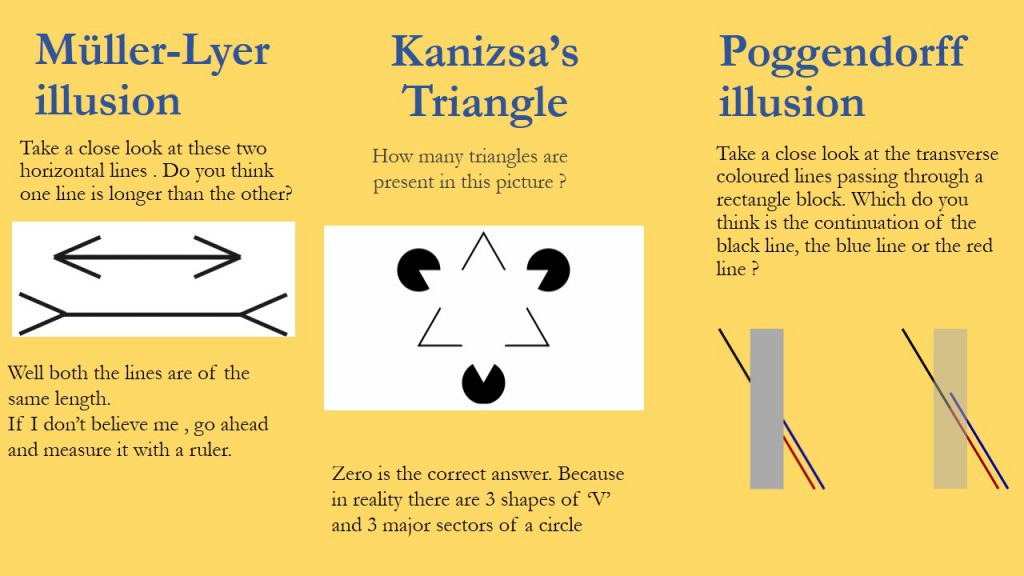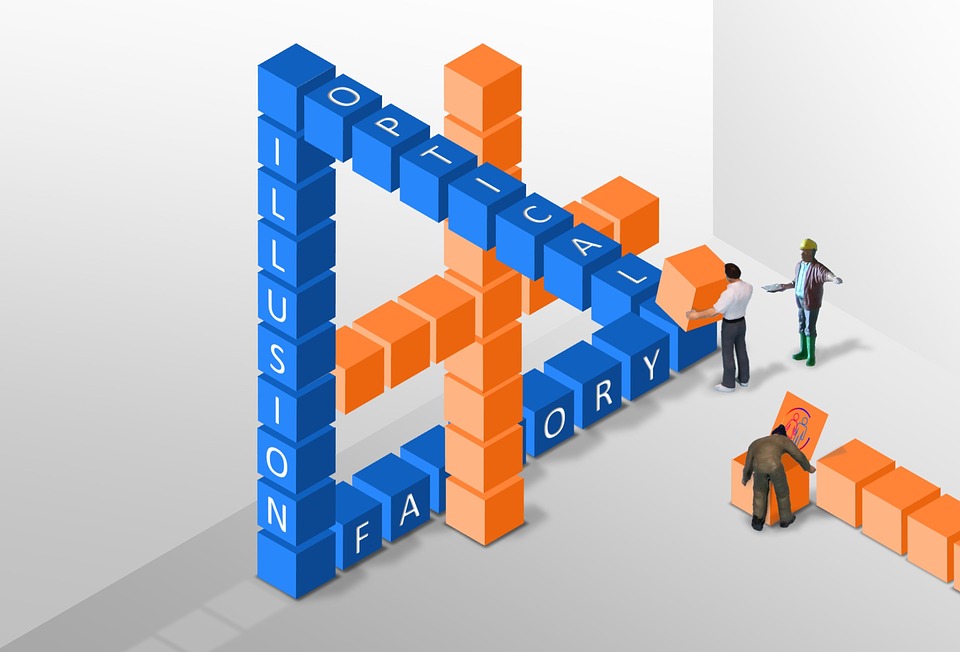Magic or Mathematics?
Do you think there exists any relationship between Maths and Magic?
Well, if you have read our previous blogs, I am sure you will agree with me. When I was researching about this relationship I came across a mind-blowing video. You must watch it. I could not believe that I was actually seeing what I was seeing.
If you think I sound crazy and disillusioned, just take a few minutes to check out this video and experience it yourself.
So, what do you think it was? Magic or some kind of trickery or there is some valid explanation for it.
You guessed it right! Yes, there is a valid explanation for it. For many years now physicists, mathematicians, artists, graphic designers, architects, and many others have used colours, patterns, and light to create such paradoxical images that deceive our brains into seeing things that may or may not be real. These images are best known as OPTICAL ILLUSIONS.
Let’s find out the anatomy of the illusion
Optical illusions can be categorised based on the nature of the difference between objects and percepts. Differences in intensive properties of targets (i.e. brightness or colour), or differences in extensive properties (their location, size, orientation or depth) can result in amazing optical illusions.
In 1854 a German high-school teacher J. J. Oppel coined the term Geometrical-Optical for all those illusions whose properties fell within the purview of geometry. Example of geometrical optical illusion based on length is Müller-Lyer illusion, on position Poggendorff illusion, on orientation Zöllner illusion and Münsterberg illusion or shifted-chess-board illusion, straightness of lines Hering illusion, of size Delboeuf illusion and many more.

Try these simple mathematical illusions with your friends. You are going to blow their mind. After you are successful in blowing their mind, I would suggest to also explain to them the mathematics behind these illusions.
The one below is called Waterfall which looks impossible to exist or work to untrained eyes.

What about the impossible cube below? Can you create something like this? You can draw this in a 2D surface. When rendered in 3D using simulation software, its hard to believe for the eyes if something like this is possible.

In all the above examples, Mathematics, and specifically geometry plays an important role. This is the other side of mathematics which makes it fun as well as interesting.
Wait! There’s More…
There are loads and loads of beautiful optical illusions which you can check out on the internet. But before I forget, for those of you who want to know the maths behind “Ambiguous Cylinder Illusion” video, here’s the link to the article https://divisbyzero.com/2016/07/05/sugiharas-circlesquare-optical-illusion/.
The author is generous enough to share the template that you can print on paper to recreate the illusion yourself, so go for it.
tl;dr
Mathematics is beautiful. An optical illusion is a clever way to use mathematics to evoke curiosity in the children.
This article is co-authored by Aruna and Nishant.
Further Reading
- https://en.wikipedia.org/wiki/Geometrical-optical_illusions
- https://plus.maths.org/content/visual-curiosities-and-mathematical-paradoxes
- https://divisbyzero.com/2016/07/05/sugiharas-circlesquare-optical-illusion/
Aruna Shankar
Latest posts by Aruna Shankar (see all)
- A Stitch In Time Saves Nine - 12 June 2020
- Doodle your way into Maths - 16 August 2019
- The Curious Case of the Mathematics behind the Illusions - 3 August 2019

